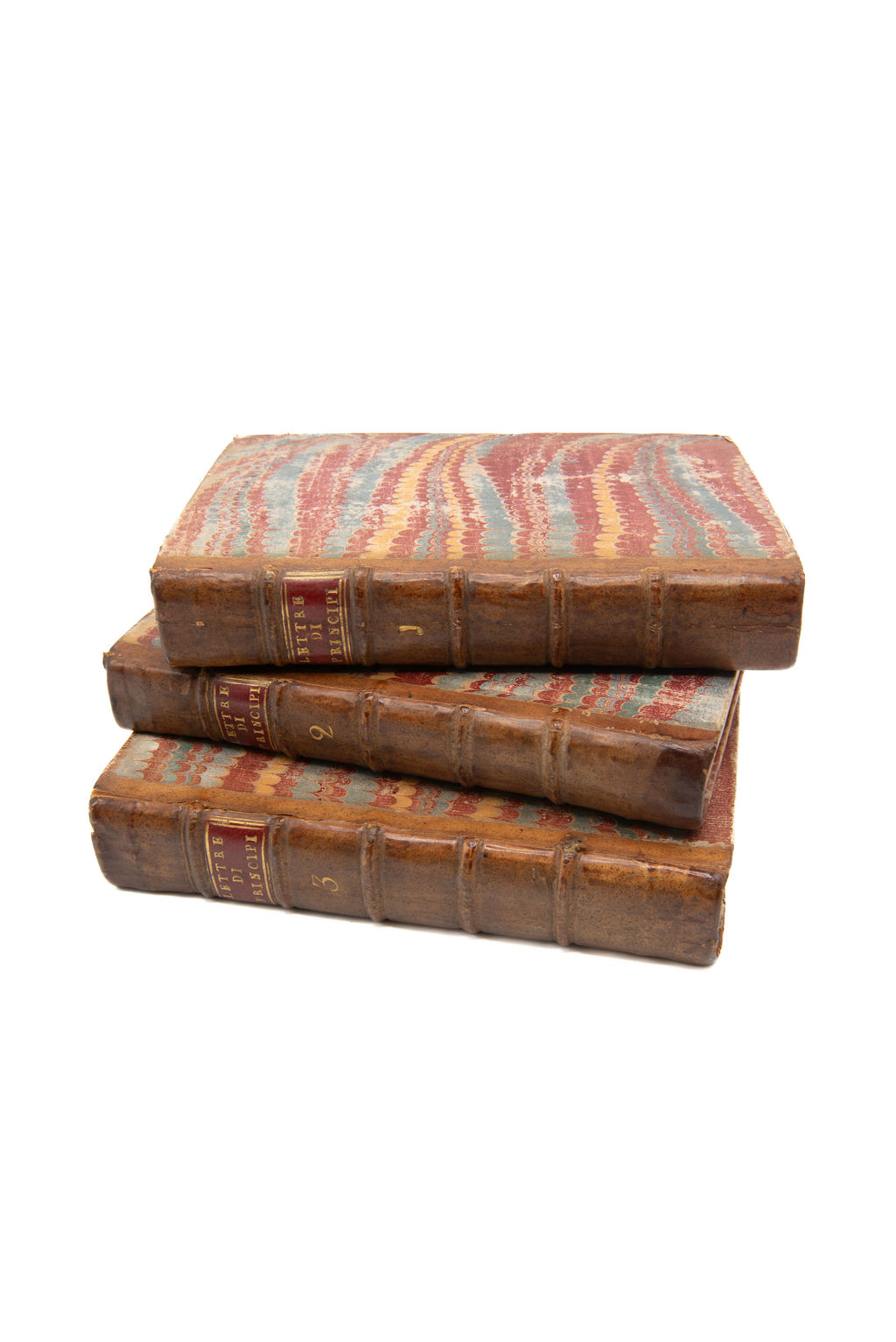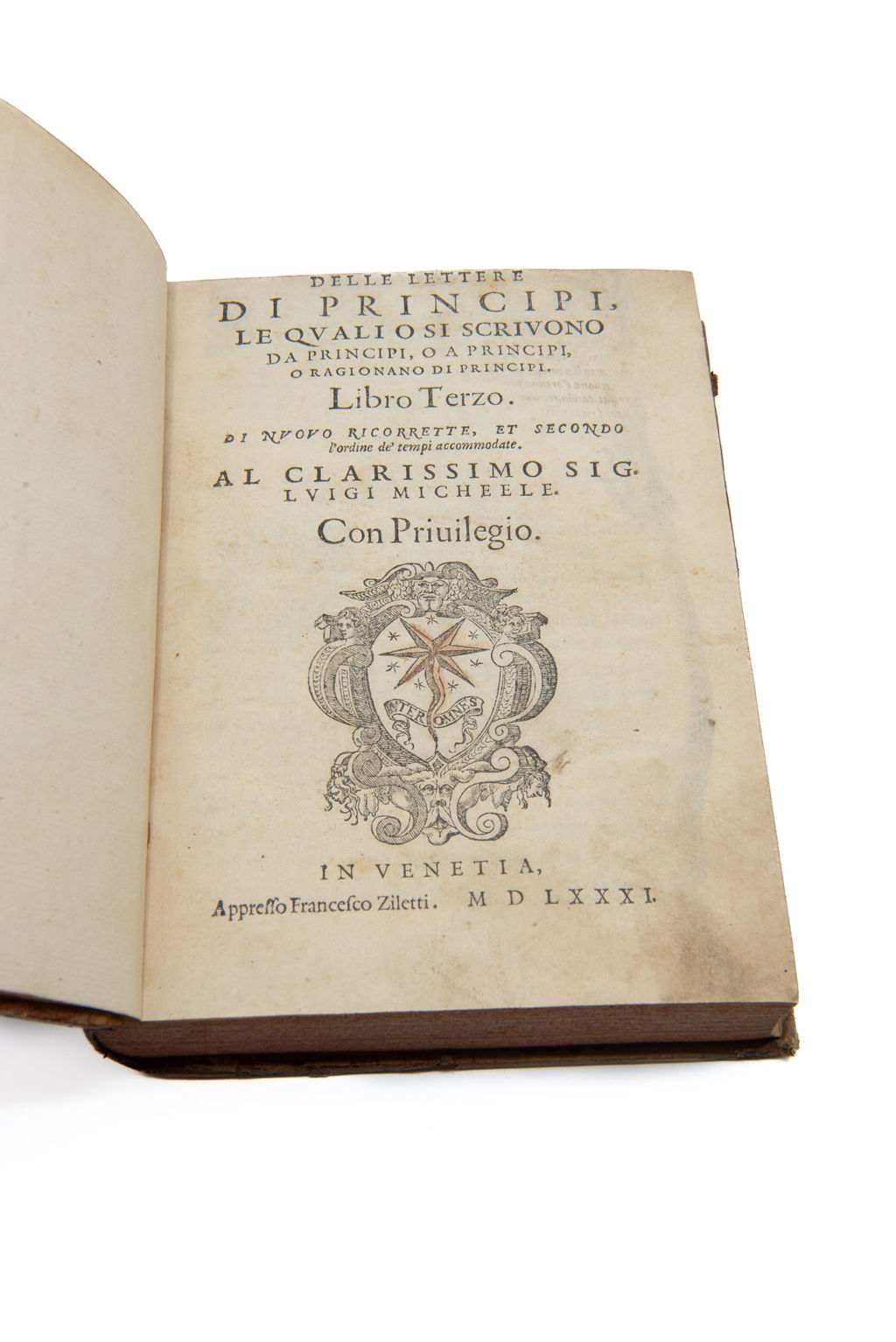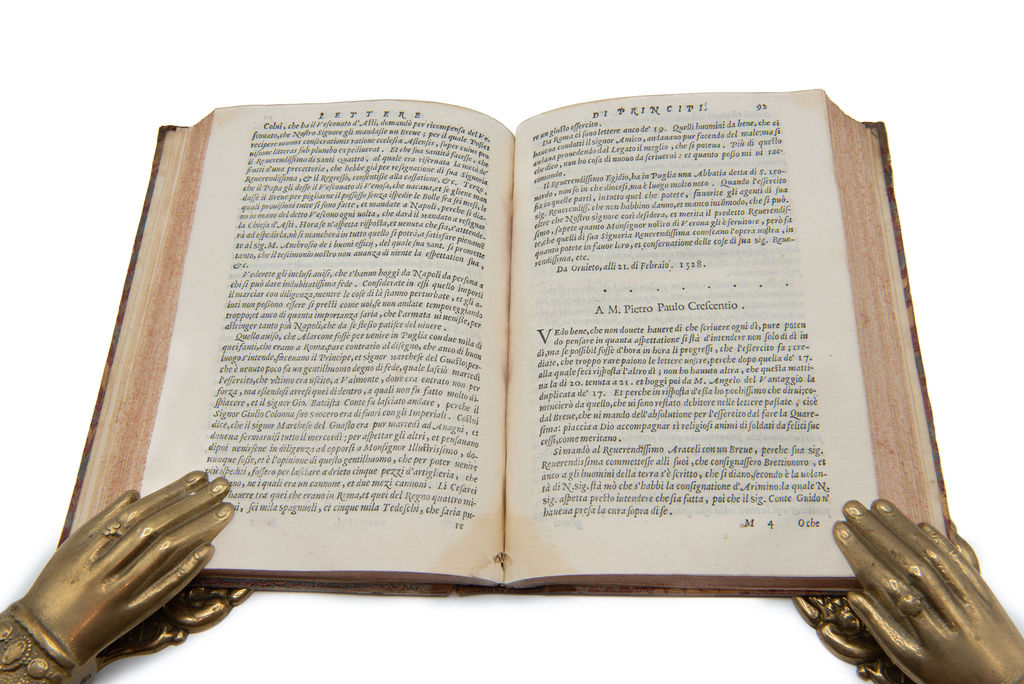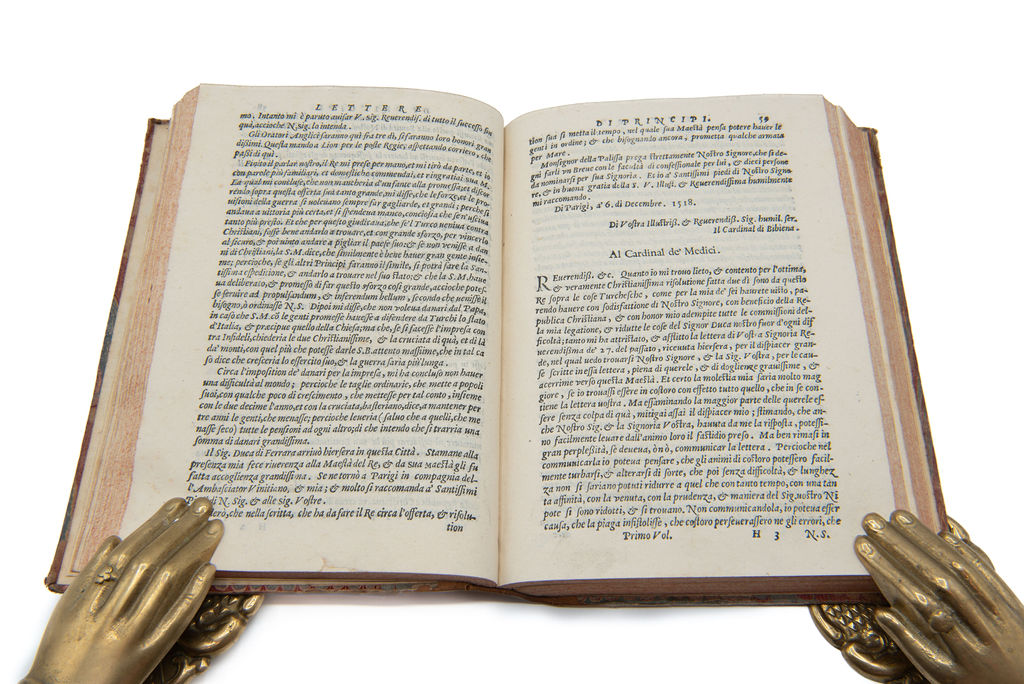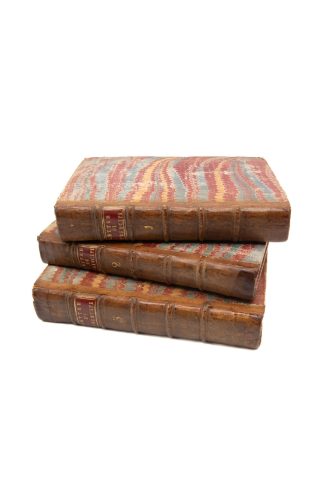RUSCELLI, Girolamo
EDWARD GIBBON’S COPY
Delle Lettere Di Principi, Le Qvali O Si Scrivono Da Principi, O A Principi, O Ragionano Di Principi.
Venice, Francesco Ziletti, 1581£6,500.00
Three vols, small 4to. ff. (vi) 236; (vi) 204; (viii) 284. Mainly Italic. Printer’s device on title-pages, woodcut head-pieces and initials. Vol 1 with E. Gibbon printed book label inside front cover, note on the 1934 Sotheby’s sale on ffep, c. 1700 ms ‘Sommo’ to 236 verso. Vol 3 has Edward Gibbon’s armorial bookplate. Some ms scribblings and occasional marginalia in more than one hand. A consistently well used copy. Vol 1 oil stains to prelims and at end, intermittent ink and oil splashes, some more extensive e.g. on ff. 112 but text legible. Vol 2 prelims strengthened at gutter with light oil stain and some spots, slight oil stain to foot of ff. 1-90 at gutter. Vol 3 ink splash to blank verso of tp, occasional minor ink or water stains, marginal ink scribblings in places, ff. 49 and 50 partially ripped, the latter affecting a few words of text, light water stain to ff. 281-285. All vols light age yellowing, margins a bit trimmed cropping some mss. In C18 marbled ¼ calf, red morocco labels, gilt volume numbers and gilt spines.
Newly corrected second edition of the collected letters of Girolamo Ruscelli. The table of contents to each volume illustrates the range of scholars, politicians, authors, military and religious figures Ruscelli had correspondence with. Numerous cardinals, Prince of Carpi Alberto III, the admiral Andrea Doria, Duke of Urbino Guidobaldo II della Rovere, Renaissance author Baldassare Castiglione, the poet Annibale Caro, military leader Pietro Strozzo and Pope Clement VII are included. Ruscelli was a prolific polymath in sixteenth century Italy who published on topics ranging from cartography to alchemy. He lived in a number of cities, eventually settling in Venice where the first edition of Delle Lettere Di Principi was published. Another notable work ascribed to his hand under the pseudonym Alessio Piemontese is ‘De Secreti Del Alessio Piemontese’ which received considerable success and went on to be translated into French, English, German, Latin, Dutch, Spanish, Polish and Danish. These volumes demonstrate the rich social context of Renaissance Venice and Ruscelli himself can be perceived as the epitome of the multi-disciplinary Renaissance man. Scholarship has shown that Ruscelli’s other work on Pyrotechnics could have inspired the depictions of fire and explosions common in Titian’s paintings (Hills, Paul. Titian’s Fire: Pyrotechnics and Representations in Sixteenth-Century Venice, 2007). Ruscelli began collecting these letters in 1562, and Gamba calls these volumes “raccolta pregevolissima.”
More significant is these volumes’ provenance. In vol 3 is the engraved bookplate of Edward Gibbon with the recognisable lion and shell family crest. His printed label appears in vol 1. These volumes were sold to Pickering on the 20th December 1934 at Sotheby’s important sale of Edward Gibbon’s Library. Books from Gibbon’s personal collection with this bookplate and name-label can be found in Trinity’s Wren Library, confirming the volumes were owned by the author of the famous ‘History’. Gibbon owned an extensive library, of which he wrote in his autobiography “I have gradually formed a numerous and select library, the foundation of my works, and the best comfort of my life, both at home and abroad.” At his house on Bentinck Street in Marylebone a catalogue was made of his library in 1777, with 2000 titles in 3300 volumes listed. Keynes refers to Gibbon’s “addiction to books” but underlines that his collection was very much a “working library.”
Though Gibbon is best known for his Decline and Fall, he was a prolific writer in a variety of other fields. His Miscellaneous Works are a multi-volume coagulation of Gibbon’s essays, commentaries and remarks on subjects ranging from the ancient circumnavigation of Africa to Roman triumphal processions. Printed posthumously by Gibbon’s long standing friend John Baker Holroyd, 1st Earl of Sheffield, it includes a significant portion of Gibbon’s personal correspondence. In this way, Gibbon emulated the practices of Ruscelli himself. From the 1934 Sotheby’s sale, a number of books are recorded as being in their original calf binding. These particular volumes appear to have been rebound by Gibbon himself for regular use: Gibbon stated “I am not conscious of having ever bought a book from a motive of ostentation, that every volume, before it was deposited on the shelf, was either read or sufficiently examined.”(Keynes, p. 16).
Sotheby’s 20th December 1934, Lot 134. Adams 563; Gamba 1470; Keynes p. 242.In stock


